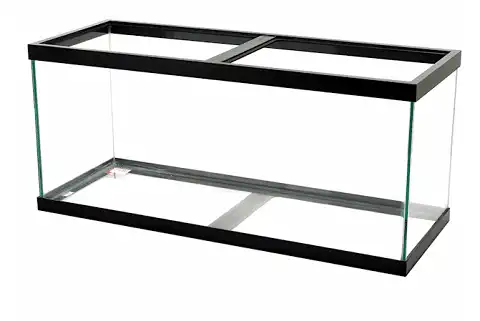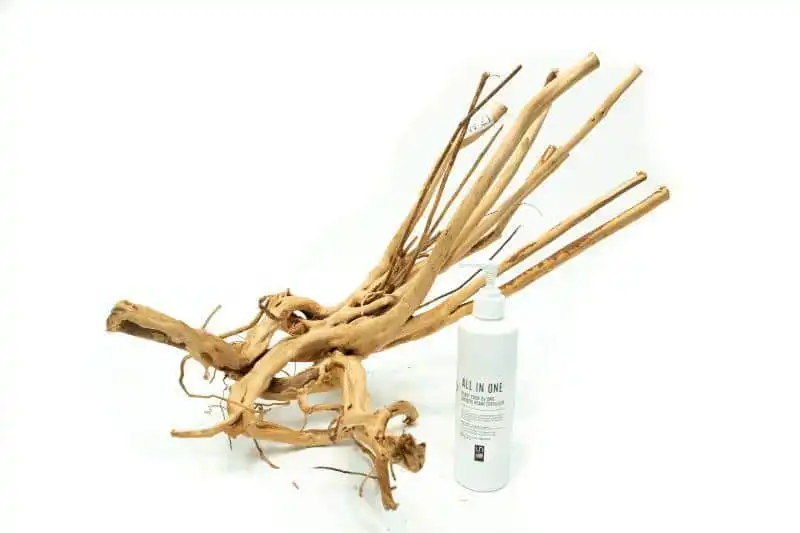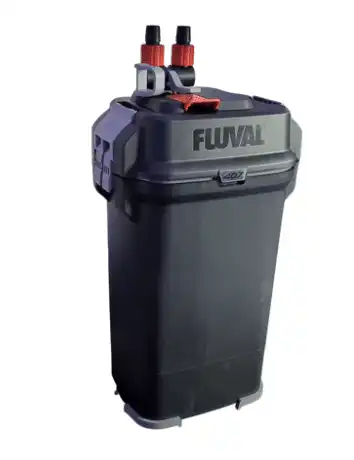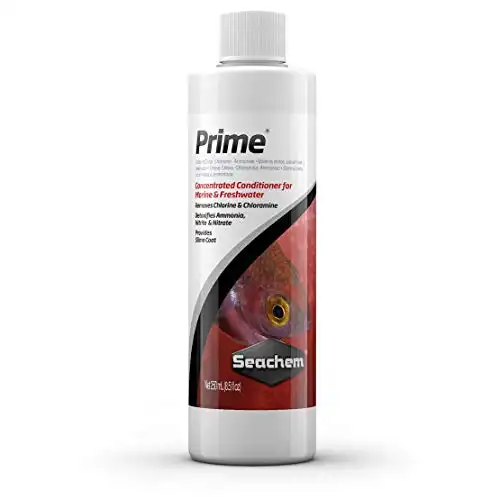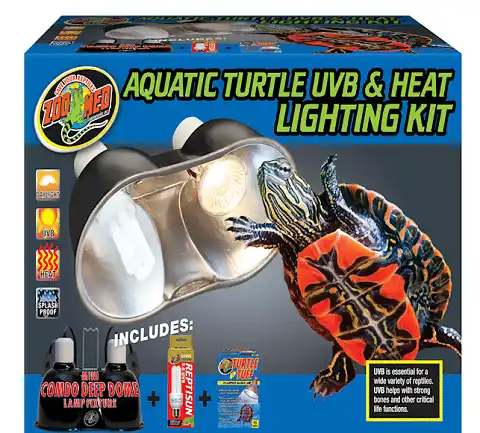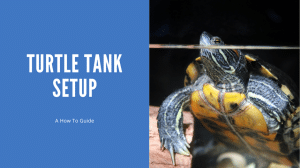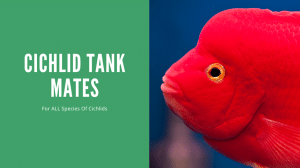Thank you for visiting! By the way… any links on this page that lead to products on Amazon and other stores/partners are affiliate links Aquarium Store Depot earns a commission if you make a purchase.
Are you setting up a new tank for a pet turtle? Creating the perfect turtle habitat is a little different from planning a fish tank, but don’t worry; the process is fun and easy once you understand their basic needs!
In this guide, we’ll run through seven steps on Turtle Tank Setup that will help you create the best environment for your pet.
Let’s dive in!
Key Takeaways
- Fish tanks make great habitats for small and medium-sized semi-aquatic turtles, but large plastic containers are also suitable.
- Setting up the right turtle tank from the start can save you some headaches down the road, but there’s nothing wrong with choosing a small size tank if you have a very young turtle.
- Pet turtles need heat, UVB light, and good filtration for long-term care.
- Your turtle’s tank must include a dry area above the water surface where your pet can bask.
Step 1: Selection
Semi-aquatic turtles need both land and water areas in their habitat. There are many options when it comes to enclosures, although your turtle’s home should be able to hold water and provide enough space for your pet to explore.
Tank Size
The recommended turtle tank size varies depending on the size and species of your turtle, as well as the number of individuals you keep in the same tank. However, it’s important to provide enough room for your pet turtle to swim comfortably.
You could start out with an enclosure as small as 20 gallons if you have a young turtle, but be prepared to upgrade to a much larger tank when your pet grows up.
A basic rule of thumb when choosing a turtle tank is to provide about ten gallons for every inch of shell, so a four-inch turtle should a 40 gallon tank. However, you should definitely research the needs of the species you keep because some semi-aquatic turtles are more active than others.
The 55-gallon aquarium is a great budget-friendly larger tank. It often goes on sale at chain pet stores.
Recommended Tank Sizes for Popular Turtle Species
- Red-ear Slider: 50+ gallons1
- Musk Turtles: 30+ gallons
- Spotted turtles: 30+ gallons
- Striped mud turtles: 30+ gallons
- Diamondback terrapin: 55+ gallons
Choose a Material
There are various options when setting up a turtle habitat. With some modifications, a regular glass or acrylic fish tank works great for most species and will allow you to view your pet from the side as it swims and explores its home. However, you can also use a large plastic container if you’re happy to view your pets from above.
Add a Cover
Turtles don’t necessarily need a hood over their tank if the water level is kept well below the rim. However, you don’t want your pet to escape, so it’s best to use a cover that will keep your turtle in and other animals out. This is especially important if you have other pets like cats and dogs.
A simple mesh screen works well and will not reduce the effect of your UV and heat lamps too much. However, you can use a regular aquarium hood if you have made modifications to allow for your pet’s special lighting needs.
Step 2: Decorate
Decorating your turtle tank can make it more visually appealing for yourself, and more interesting for your turtle. Unfortunately, adding too many decorations can make your tank more difficult to clean. Read on for more tips on turtle tank decorations.
Substrate
Substrate is not strictly necessary in a turtle tank. In fact, many turtle owners prefer bare-bottom aquariums because they are easier to clean and maintain. However, a layer of sand or river pebbles can create a more natural-looking environment and allow your turtle to dig and enjoy its environment.
You can use pool filter sand or play sand to save a few dollars or choose an aquarium sand substrate with a color of your choice. Just remember to rinse your substrate well before adding it to your aquarium as new sand and gravel may cloud your water or introduce unwanted chemicals.
Regular aquarium gravel is a bad idea because turtles can swallow small stones and suffer from impaction.
Hardscape
A few large rocks or pieces of driftwood can make your turtle tank look more natural and give your pets a place to explore. However, carefully arranged objects will make cleaning more difficult and can be a hazard for your pet, so keep things as simple as possible.
What You See Is What You Get!
Buce offers a WSYSIWYG show pieces. Great for aquascaping. They make your aquascapes pop like no other!
Aquarium hardscape materials are often pre-cleaned, but it’s always a good idea to wash your hardscape properly before adding it to your tank. Boiling driftwood before adding it to your tank will reduce the amount of tannins that leach into the water, although this step is not strictly necessary.
Plants and Backgrounds
Turtles tend to damage live plants, but aquarium-safe plastic plants are a great way to make your turtle tank setup look and feel a little more natural. Some turtles will chew on plastic plants, so be prepared to remove these decorations from the tank if necessary.
A plastic or paper aquarium background with plants and other natural designs can also make your turtle tank a more attractive and enriching environment for your pet.
Step 3: Create a Basking Area
Turtles love to spend time in the water, but these aquatic reptiles also need a place to hang out above the surface. Set up a tank with a basking area (AKA Turtle Dock) above the water, and there are a few different options here.
- Floating and Sinking Basking Areas
Pet stores sell ornaments made for this purpose, although it’s important to choose an option that will match the depth of your tank. Floating or clip-on basking areas are also available, although they tend to be more suitable for juveniles and smaller aquatic turtle species.
If you are pretty handy, you can also build your own basking area from PVC pipe and egg-crate material to suit your tank and turtle. Just be sure to use non-toxic materials that won’t rust, rot, or release harmful chemicals into the water.
- Natural Materials
You could also slope the substrate into the water or arrange rocks or driftwood on one side of the tank for a more natural look, although this adds a lot of weight while limiting the swimming space. If you do make a rock pile, make sure your basking area is packed very securely to avoid injuries to your pet or damage to a glass fish tank.
- Above-tank Basking Areas
Basking platforms and lofts that attach above the aquarium are also available for turtles, and they are usually made to fit standard aquarium sizes. These products are great because they provide plenty of space above the surface and allow you to use all of the water in an aquarium rather than filling it halfway.
Step 4: Add and Heat the Water
The water in your turtle tank should be maintained at a comfortable, constant temperature. Unless you keep your home warm and temperature controlled, the best way to do this is with a submersible heater.
Selecting a Heater
Regular aquarium heaters are dangerous for turtles because they can knock them over and crack the housing or chew the cable with their strong beaks.
Best Aquarium Heater
Finnex has achieved what we as hobbyist have asked for decades. A reliable heater that won't fail. Japanese components. Receives our top recommendation.
You can protect your heater with a heater guard or purchase a special turtle heater with a plastic or titanium construction and cable guard. Alternatively, Choose a canister filter with a built-in heater and house your equipment outside of the tank.
- Heater Sizes
Aquarium heaters come in various sizes and wattages, so it’s important to select a model that will maintain the correct temperature in your tank size and indoor conditions. Heaters in the 75 to 200-watt range are typically used in small and medium-sized turtle tanks.
The recommended tank size for each model will be stated on the heater’s packaging, but you should also factor in the ambient temperature of your home when choosing a heater size.
Monitoring Water Temperature
Most aquarium heaters can be set to automatically maintain the proper temperature for your turtle. However, the settings are not always completely accurate, so I recommend including a thermometer in your tank to monitor the water temperature. Just be sure to use something sturdy that your pet cannot damage!
Step 5: Install a Filter
Turtles can be messy creatures, so the water in their tank will become dirty and smelly pretty fast without good filtration and regular maintenance.
Selecting a Filter
There are many different filters available in the aquarium hobby but not all of them are recommended for turtle tanks. Read on to learn which filters work best for semi-aquatic turtles.
- Canister Filter
Canister filters are probably the best option because they are housed outside the aquarium. These filters can hold a lot of filter media without taking up any space in the tank, although they tend to be more expensive than other designs.
Our Subscriber's Choice
Top name brand, Italian made, and updated design. The next gen Fluval Canisters are a best buy!
- Internal Power Filter
An internal filter is also a good option for small turtle species, although you may need to protect the cable and any weak plastic parts. These filters are generally the most affordable option and a decent product will be very quiet.
- Other Options
Depending on the depth and layout of your turtle tank, you may also be able to use a hang-on-back filter, although these filters can be pretty noisy in tanks that aren’t filled to the rim.
Air-powered sponge filters are generally unsuitable for turtle tanks because they take up a lot of space and are easily damaged.
Water Quality and Maintenance
You could cycle your aquarium for a few weeks before you add your turtle to its new home, although you can speed up the process by using some filter media from a mature tank.
Fortunately, it isn’t absolutely necessary to cycle your turtle tank beforehand, but there are a few steps you should take to keep your pet healthy in the first few weeks.
Bottled bacteria can be used to jump-start the cycle once you have added your turtle or you can perform regular large water changes to keep ammonia levels as low as possible while the nitrogen cycle establishes in your turtle tank.
Remember to treat tap water with water conditioner before adding it to your aquarium. This will help to neutralize chemicals like chloramine that can be harmful to your pet.
Seachem prime is a easy to use and affordable choice when it comes to remove chlorine and chloramines from your tap water. Highly recommended!
Step 6: Add Lighting
Lighting is one of the most important components of your turtle tank setup. A regular aquarium lamp will help to light up your tank but it won’t provide the heat and ultraviolet light that your turtle needs. Read on to learn more about your turtle’s special light requirements.
Basking Light
If you keep your turtle in an outdoor pond, it will get all the warmth and UVB rays it needs from natural direct sunlight, but an indoor turtle tank needs some special equipment. However, you will need a heat lamp and a UV basking lamp above your turtle’s basking area if you house your pet indoors.
Read on to learn about the importance of ultraviolet light.
- UVA and UVB Light
Turtles need UVB light to produce vitamin D and absorb calcium, but most regular lamps and aquarium lights do not provide this important energy.
This UVB kit from Zoo Med offers a good value and is perfect for new turtle keepers
Unfortunately, glass filters out the UVB rays in natural sunlight so your pet can get very sick if kept indoors without this special light. However, UVA and UVB lights are easily available online or from your local pet store.
- Heat Lamp
Turtles are cold-blooded animals that can only remain healthy and active in a certain range of temperatures. In nature, turtles regularly bask in the sun to warm up. Each species has slightly different heat requirements, but most require temperatures between about 80 and 90 degrees Fahrenheit in their basking spot.
Simply adjust the distance from between the lamp and the basking spot to dial in the temperature. The best way to get an accurate measure of the temperature on your turtle’s basking spot is to use a digital heat gun/thermometer.
You can use separate heat and UVB lamps or select a single mercury vapor bulb. These powerful lamps are great ‘all in one’ options that produce both heat and UVB.
General Lighting
There are a few options for lighting your turtle tank. You may be happy with the amount of light produced by the UV and heat lamps, or you could include regular aquarium lighting or even submersible LED lighting to enhance your display.
Light Timing
It’s best to set your lights on a timer so that you don’t need to manually switch them on and off every day. 10 to 14 hours of UV light per day is recommended to simulate a natural daylight period for your pet.
Step 7: Add Your Pet
Congratulations, your turtle tank is nearly ready for your pet! The last step is to test the water temperature with your thermometer to make sure it isn’t too hot or cold. Once the water is at a comfortable temperature, you can introduce your turtle and watch it explore its new home.
Additional Turtle Tank Setup Safety Tips
- Avoid any objects or decorations that your turtle could get caught in or trapped under. Turtles can survive for a long time underwater but they need to return to the surface to breathe.
- Measure water parameters regularly with an aquarium test kit. Ammonia and nitrites are not as dangerous for turtles as they are to fish but you should strive to maintain excellent water quality for your wet pet.
- UVB lights should be replaced once or twice each year. You may not notice the difference, but they are only effective for a few months.
- Use sturdy, turtle-safe filters and heaters. This is especially important for larger species.
- Turtles are known to swallow gravel while feeding. Avoid gravel that is coarser than sand but smaller than your turtle’s head.
FAQs
What do turtles need in a tank?
Turtles need a tank with enough room to swim comfortably while foraging and exploring. These animals also need a heater and a filter to keep their water warm and clean.
One side of their enclosure must include a land area or basking platform where your pet can crawl out of the water and soak up some heat and UV rays. Install a UVA and UVB lamp above this area of the tank.
Can turtles live in a tank full of water?
Most turtles cannot survive long-term in a tank full of water. These reptiles also need a dry area above the water where they can spend time basking.
What do you put on the bottom of a turtle tank?
Turtle tanks do not need substrate, although a layer of sand and smooth rocks will create a more natural and comfortable environment for your pet. Avoid gravel that is small enough to eat since this can be very dangerous for your pet.
How high should the water be in a turtle tank?
Your turtle tank should include enough water and space for your pet to swim comfortably. As a general rule, the minimum depth should be at least twice the length of your turtle’s shell so that it can turn right-side-up if it flips over.
Ideally, the tank should hold as much water as possible while also including driftwood or other objects that create areas of different depths.
What is needed to set up a turtle tank?
You will need the following items and equipment to set up your turtle tank.
- Suitable tank with cover
- Substrate and decorations
- Turtle basking area
- Light fixtures and lamps
- Aquarium heater
- Thermometer
- Aquarium filter
- Water test kit
Final Thoughts
So, that’s everything you need to know to set up a basic turtle tank! I hope this guide has answered all your questions and helped you create an amazing home for your new aquatic pet.
Do you have a pet turtle? Share your experiences and tips in the comments below!
- About the Author
- Latest Posts
I’m thrilled that you found Aquarium Store Depot! Here you’ll find information on fish, aquariums, and all things aquatics related. I’m a hobbyist (being doing this since I was 11) and here to help other hobbyists thrive with their aquariums! I adhere to a high quality Editorial Process and Review products with real life field usage and practical analysis.


